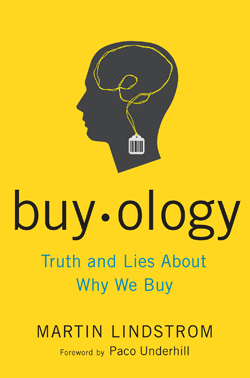
The evolution of marketing is well documented. The success of AMC’s TV series “Mad Men” highlights and romanticizes the earlier days of mass marketing and advertising. Set in the 1960s, the show depicts a time when a focus group and a martini were all you needed to figure out how best to appeal to customers.
Things change. Commercial network television of the ’60s gave way to targeted niche marketing (think 250 cable television stations and a “lifestyle” magazine for nearly everyone), which has led to the behavior-based, highly individualized marketing methods being used today.
Catalog and direct marketers have realized comparable shifts. Large general catalogs such as Montgomery Ward and Sears led to more specialized offerings and targeted efforts. Along the way, change has been predicated on a need to know customers better and to use this knowledge to drive more relevant marketing.
So the questions are, have efforts to understand our customers advanced? Do we really know our customers? Are we using customer knowledge to build and maintain long lasting customer relationships? After all, the more we know about our customers — or potential customers — the better we are able to meet or exceed their needs, right?
Major web players such as Google, eBay and Amazon have built business models on the premise of connecting the needs, wants, desires and behaviors of customers with the right product and the right price at the right time. Is there more our industry should be doing to do the same?
Changing customer demographics, an evolving economic environment and advances in technology are adding to a growing desire for control and self-determination on the part of customers. We are moving from mass consumption to individual consumption — and to be successful in this market, customer knowledge is essential.
Simply put, the most common forms of customer knowledge are based on facts — specific things we know about customers such as their age or where they live and their history. This means specific information about past behavior — the most common being frequency, recency, and monetary and channel choice.
Fact and history-based knowledge is often supplemented or enhanced with external, appended data sources, but it can still fall short in helping us to truly know our customers.
What is often missing is the more emotive and psychographic knowledge — attitudes, interests and motivations. In essence, knowledge of what drives actual behavior. Advances in neuroscience and books such as Martin Lindstrom’s Buyology reinforce the belief that most buying decisions are driven by unconscious and less obvious drivers.
And while it may not be practical to mine customer knowledge through high-tech brain scans, it’s through this deeper level of understanding that we are able to learn about, influence and react to future behaviors.

An apparel merchant’s experience
An established women’s cataloger recently completed a multiphased project designed to better understand its customers on several levels. This marketer was and is highly successful, from the quality of its products, to the way it treats its customers, to its contribution to its bottom — but it was missing the “why” behind its success.
The company wanted to identify the one or two things most critical to its success that it could use as a filter or benchmark for all its activities. And it believed this “one thing” lay in a deeper understanding of its customers.
A simple four-step process can enable any cataloger or direct marketer to uncover, understand and fully harness their “one thing.” The process is designed to:
- Reveal attitudes and perceptions of your brand, as well as the attitudes and perceptions of relevant competitive brands
- Identify key motivators that impact your customers lives beyond their relationship with your brand
- Construct actionable customer segmentation that goes beyond common and traditional methods
- Fully define your brand’s marketable universe
THE PROCESS HAS FOUR SIMPLE STEPS:
- INTERNAL PERSPECTIVES
Internal perspective is an obvious first step, but it can also be an enlightening one. This particular women’s apparel cataloger used an outside consultant to conduct one-on-one interviews and group discussions with key company stakeholders — merchandisers, marketers, creative and customer service staff, finance and operations staff, as well as the CEO.
For some companies or brands, this simple process can uncover inconsistencies in defining “who is our customer?” or, more commonly, “who is our highest-value customer?” or even “what are our strategies for affecting our customer and how do each of our pieces of the puzzle come together to form a common approach?”
This internal perspective, once fully understood, created the foundation for the next two steps of the process.
- LEVERAGE DATA FOR NEW INSIGHTS
Data is the lifeblood of direct marketers. Enhancing customer data is a standard procedure, with the most common forms being more demographic in nature.
The women’s cataloger took its 12-month buyer file and appended demographic information at both a household and individual buyer level. The marketer further enhanced the file with psychographic and behavior-based information, including lifestyle characteristics, media usage characteristics and buying behavior.
The combination of buyer data, demographic information and psychographic information resulted in new customer insights. The merchant used this new knowledge to craft three distinct high-value customer segments, which were in turn used to model three unique customer personas — each with a unique demographic and psychographic profile. The company then projected those models onto the U.S. population, resulting in a well-defined and actionable understanding of its marketing universe.
- TALK TO CUSTOMERS
Marketers today have access to a number of mechanisms for “talking to” and “listening to” customers. In fact, great efforts are made to build dialog into customer relationships through a host of customer feedback loops. Product reviews, satisfaction surveys, call center reporting, product blogs and electronic bulletin boards are all ways marketers can both talk to and listen to customers.
Using its new segmentation as a guide, the women’s apparel cataloger conducted both quantitative (e-surveys) and qualitative (online bulletin boards) research. Results of this research, when combined with the intelligence from the existing customer dialog sources, created a robust, in-depth understanding of its customers.
- BRING IT TOGETHER
The intersection of company/brand perspectives, leveraged internal and external data, and the voice of the customer can create new and insightful customer knowledge. The challenge (and fun) lies in how best to use the new information.
The cataloger in our example had several uses for its new customer knowledge. Some actions came from internal working groups focused on each of the high-value customer personas. A comparable effort in your company could result in the following applications:
-
Prospecting and acquisition efforts: New customer knowledge can result in a slight tweak or even a dramatic change in how you view current customer segments. New customer segmentation and the resulting modeling can dramatically impact prospecting efforts most notably in list rentals, offer testing and creative executions.
-
Positioning and messaging: A deeper understanding of customers beyond what comes from the traditional methods can allow you to tap into the heart and emotion of your audience, while providing insights about how best to connect your product and services to them. This can affect tone and manner of messaging and identify what features and benefits of your product are the most relevant to communicate. And it should impact all customer touchpoints — catalog, direct mail, email, website, call center scripting, etc.
-
Enhanced customer service: Beyond general positioning and messaging, website and call center experiences can easily be modified to be relevant to the persona and characteristics of the customer segments.
-
Merchandising: A deep customer knowledge enables you to source or develop the right set of products or merchandise to sell to them. This new knowledge can further enhance or solidify merchandising strategy.
-
Brand extensions: For our women’s cataloger, the new customer knowledge resulted in discussions regarding development of brand and product extensions, expanding its merchandising strategy to boost overall sales while increasing customer lifetime value.
Chad Giddings ([email protected]) is executive vice president, marketing and planning, for consultancy J. Schmid & Associates.